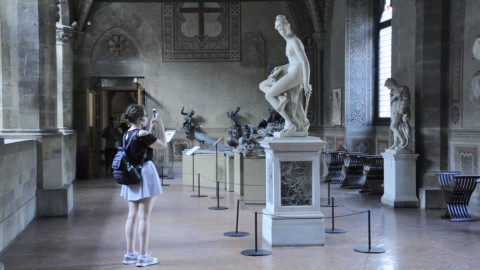Italians missed cultural events during the health emergency a lot, but in these months in which it was not (and is not) possible to go to cinemas, theaters, museums, many have been able to do without them. And there are more people, especially among non-habitual users (therefore the majority) who imagine a remote use of culture for the post-Covid era, than those who instead think that after the bans, live use will increase again. This is what emerges from the research "The cultural consumption of Italians in the time of Covid-19: old and new habits", conducted by Ipsos and commissioned by Intesa Sanpaolo, on a sample of 1000 people nationwide and 200 regular users of culture. The survey highlighted the importance of digital in the fruition of culture during the confinement period, both for 'neophytes', i.e. those "who have approached the world of culture since the lockdown", and for regular users ( "at least 4 cultural activities per month").
Live enjoyment of cultural events/activities was greatly missed by 86% of the sample and 94% of regular users. But how did Italians react on average? Meanwhile, what were the most practiced cultural activities before Covid: the cinema was at the top (55% of those interviewed went there 3-4 times a year), then reading a book (45%, but that can also be done in lockdown …) and then visit museums or exhibitions (44%), participate in events or art fairs (40%), go to music concerts (36%), and finally go to the theater (20%). These and other activities have unfortunately been replaced by about half of Italians during Covid: 24% simply did nothing, 23% replaced culture with new interests/activities, only another 23% looked for new ways of enjoying cultural events remotely. So the main tendency has been either to abandon the interest, or to try to enjoy culture even remotely, with pros and cons that Ipsos' research does not fail to list.
For two thirds of the interviewees the main advantage is the freedom of use at any time, while 50% refers to the costs, evidently free or in any case much lower than the live use. However, 62% denounce the "coldness" of these formulas, as well as the lack of experiential value, of relationship with the artist (57%), and in a country like Italy the same technological limits could not fail to be reported ( 39%). But when the health emergency ends, will you want to go back to live use? The answer is not so obvious. The most assiduous and passionate public has no doubts in this regard: only 21% think that in the post-Covid period, live viewing will neither return to its previous levels nor increase. But the "general public", the occasional one, instead believes in 31% that digital use will increase even after





